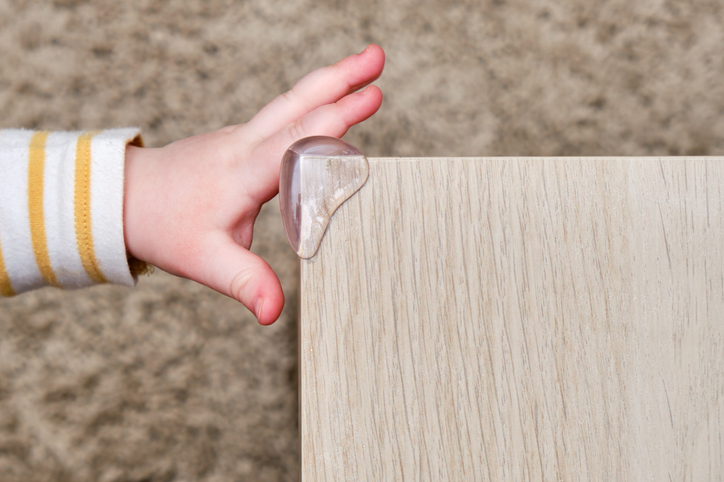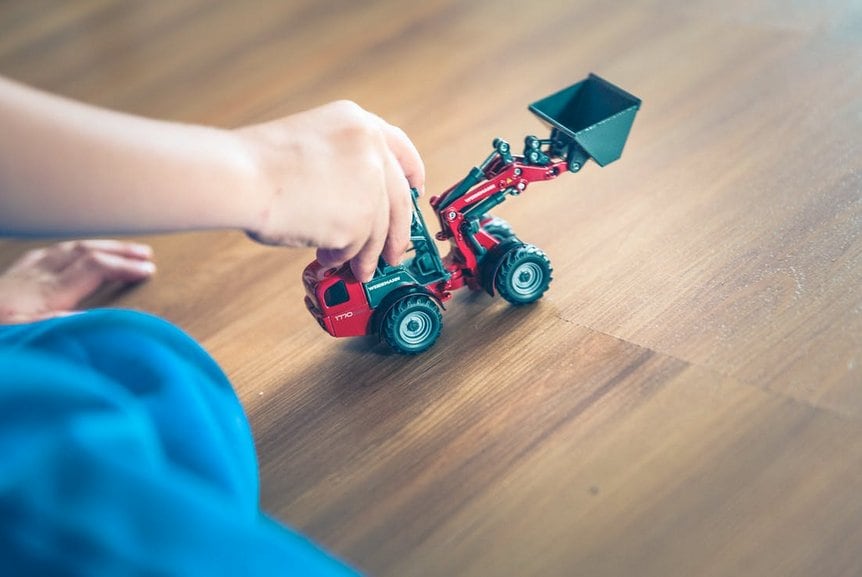In the quest to create a haven of safety within our homes, the prevention of accidental poisonings emerges as a paramount concern. This pursuit revolves around two key pillars: childproofing and safe storage. By meticulously childproofing our living spaces and employing prudent practices for storing potentially hazardous substances, caregivers lay the foundation for a secure environment where curiosity can thrive without compromise.

Understanding The Risks Of Accidental Poisonings
Accidental poisonings within the confines of one’s home can be both alarming and potentially life-threatening, especially for young children who are naturally curious and prone to exploring their surroundings. This section delves into the various facets of understanding the risks associated with accidental poisonings, beginning with identifying common household items that pose significant poisoning risks to children.
Common Household Items Posing Poisoning Risks To Children
Within the familiar confines of our homes, seemingly benign household items can harbor hidden dangers for children. Cleaning products, those everyday essentials for maintaining cleanliness, may contain a cocktail of chemicals that, if ingested, could lead to dire consequences. Household medications, intended to alleviate discomfort and aid well-being, stand as potential hazards if not stored and managed with caution.
The allure of cosmetics and personal care products can entice the curiosity of young minds, yet their contents may hold harmful compounds. Even the presence of ornamental houseplants can have a toxic nature when ingested. Beyond these, small, seemingly innocuous items like button batteries and alcoholic beverages can become inadvertent threats. These household staples, woven into our daily lives, thus necessitate a discerning eye and a proactive approach to ensure a safe haven for our children.
Consequences Of Accidental Poisonings
The consequences of accidental poisonings can range from mild discomfort to life-threatening situations, depending on the substance ingested, the amount consumed, and the age of the child. Mild reactions may include nausea, vomiting, diarrhea, or skin irritation. However, more serious poisonings can lead to respiratory distress, seizures, organ damage, or even death. The urgency of the situation demands immediate medical attention and intervention.
The Need For Proactive Measures To Prevent Incidents
Amid the comforting familiarity of our living spaces, an imperative arises to be proactive guardians of our children’s safety. Nurturing their natural curiosity while safeguarding them from harm demands a concerted effort. This effort unfolds through the careful choreography of childproofing, and strategic deployment of safety mechanisms that render potential hazards inaccessible to tiny hands. Cabinets secured, sharp corners softened, and potential dangers locked away, childproofing transforms our homes into secure areas for exploration. Yet, fortifying against accidental poisonings extends beyond physical barriers. It encompasses a conscious approach to safe storage – a practice that positions harmful substances beyond reach and out of sight, sealing them within locked cupboards and high shelves.
A parallel narrative of education unfolds alongside, as children are sensitized to the risks and empowered to make sound choices. This commitment to awareness reverberates through all aspects of caregiving, including vigilant supervision and candid discussions that ensure everyone within the household is well-versed in the symphony of safety. United by the purpose of prevention, these measures orchestrate an environment where children can thrive, flourish, and revel in their exploration without the shadow of potential harm.
Childproofing Strategies For A Safe Home
Childproofing is the embodiment of a safety net woven with care and foresight. It is an act of preemptive love, a shield that ensures children can flourish without stumbling into harm’s way. By childproofing, caregivers affirm their commitment to providing a secure haven where youngsters can satisfy their curiosity without encountering potentially dangerous situations. This practice acknowledges the innate impulse of children to touch, taste, and explore, and transforms the home into an inviting landscape where those explorations are met with safeguards.
Comprehensive Childproofing For Different Areas Of The Home
Safeguarding a home against potential hazards requires a systematic and comprehensive approach. A well-structured childproofing checklist serves as a roadmap, guiding caregivers through the intricate task of securing various areas of the house. Beginning with the heart of the home, the kitchen, this checklist entails installing safety latches on cabinets to thwart access to cleaning agents and sharp objects. It extends into the bathroom domain, emphasizing the importance of securing medications and vitamins within locked cabinets. The meticulous process also involves adjusting the water heater to a safe temperature and employing toilet locks to prevent drowning hazards.
Transitioning to the living areas, the checklist urges the anchoring of heavy furniture to prevent tipping, coupled with measures such as covering electrical outlets and eliminating cord hazards. Moving outdoors, childproofing encompasses erecting barriers around pools and water features, as well as securely storing tools and chemicals. The inclusion of non-toxic plants in landscaping echoes the commitment to safety. Each point on this checklist resonates as a testament to caregivers’ dedication, weaving layers of protection that offer children the freedom to explore without apprehension.
According to the Centers for Disease Control and Prevention (CDC), over 300 children in the United States are treated in emergency departments every day due to accidental poisoning, highlighting the critical importance of childproofing and safe storage practices to prevent such incidents.
Safe Storage Practices For Household Items
The realm of safe storage practices serves as a sentinel, guarding against potential threats that might otherwise lie dormant within the confines of our homes. This section delves into the fundamental principles of safe storage, delving into the crucial role of product labels and warning symbols, and offering guidelines for safely storing prescription medications, alcoholic beverages, and hazardous plants.
Key Principles Of Safe Storage For Cleaning Products, Medications, And Toxic Substances
Safe storage is the cornerstone of household safety, a choreography of careful choices aimed at shielding our loved ones from potential harm. At its core lies key principles that resonate as guidelines for the guardians of a secure environment. Segregation and labeling emerge as crucial strategies, advocating for the separation of cleaning products, medications, and toxic substances from everyday items. This deliberate division minimizes the risk of accidental exposure or ingestion.
Elevating storage to higher realms, beyond the grasp of little hands, becomes a protective dance, amplified by the fortification of locked cabinets. Original containers, akin to storytellers, recount vital information through labels about content, usage, and first aid measures. These containers carry with them the essence of safe storage, preserving the essence of potential dangers. Lastly, the refrain of child-resistant packaging harmonizes with the narrative, adding an additional layer of defense against the curiosity of youth. Through these principles, caregivers orchestrate an environment where potential hazards are choreographed into obscurity, and the safety of their loved ones takes center stage.
Role Of Product Labels And Warning Symbols In Safe Storage
The narrative of safe storage becomes a harmonious duet with the symphony of product labels and warning symbols. Labels offer a wealth of information, from ingredients and usage instructions to first aid measures in case of accidental exposure. Warning symbols, denoting toxicity or potential hazards, are visual cues that demand attention. Understanding these labels and symbols is integral to safe storage, enabling caregivers to make informed choices about where and how to stow different products.
Storing Prescription Medications, Alcoholic Beverages, And Hazardous Plants
Safe storage of prescription medications requires diligence. Keep them in a locked medicine cabinet or box, out of sight and reach. Follow specific storage instructions provided by healthcare professionals to maintain potency and prevent unauthorized access.
Alcoholic beverages, though commonplace, can pose a risk if accessed by young children or teenagers. Store them in a locked cabinet or separate area to prevent underage consumption. Educate older children about the dangers of alcohol and the importance of responsible consumption.
The allure of indoor plants can belie their potential danger. Research the toxicity of houseplants and position them out of reach or opt for non-toxic alternatives. A proactive approach ensures that the natural beauty of indoor flora harmonizes with a safe environment for children.
Educating Children And Caregivers
Educating children about the potential dangers lurking within the confines of the home is akin to arming them with a shield against the unknown. By imparting knowledge about the toxicity of cleaning products, medications, and other hazardous substances, caregivers equip children with the discernment to recognize and avoid potential risks. This education instills a sense of caution, empowering children to differentiate between harmless items and those that could pose harm, thereby transforming them into active participants in their safety.
Effective Ways To Teach Young Children Not To Ingest Unfamiliar Substances
Engaging young minds in the art of avoiding potentially harmful substances requires a delicate yet impactful approach. Visual aids, such as pictures and simple diagrams, serve as visual cues that resonate with children’s curiosity. Role-playing scenarios help children understand potential consequences, fostering a deeper comprehension of the importance of not ingesting unfamiliar substances. Narratives and stories imbue the educational process with relatable contexts, making the lessons more memorable. Reinforcement through regular conversations and gentle reminders solidifies the message, creating a tapestry of understanding that becomes woven into a child’s behavior.
Role Of Caregivers In Adhering To Safety Practices
The influence of grandparents and caregivers is profound in shaping a child’s environment and experiences. As stewards of their safety, grandparents play a pivotal role in upholding safety practices. By adhering to childproofing measures, safe storage practices, and educational guidelines, they model behaviors that children can emulate. Caregivers, too, hold a position of authority in cultivating safety consciousness. Open communication channels between caregivers and grandparents foster a unified approach, ensuring consistency in safety measures across different settings.
Responding To Accidental Poisonings
In the disconcerting event of a child ingesting a potentially poisonous substance, time becomes a precious commodity. The immediate steps taken can significantly influence the outcome. The first and foremost action is to ensure the child’s safety by removing them from the vicinity of the toxic substance. Next, promptly call emergency services or your local Poison Control Center for expert guidance. Avoid inducing vomiting or giving the child anything to eat or drink unless instructed by medical professionals. If the substance is in contact with the skin or eyes, follow the guidance on the product label for immediate first aid. Having the container or product in hand when seeking help aids medical professionals in accurate diagnosis and treatment.
Role Of Poison Control Centers In Prevention And Response
Poison Control Centers emerge as beacons of expertise and guidance in the realm of accidental poisonings. These centers house skilled professionals equipped with the knowledge to provide immediate assistance in cases of ingestion or exposure to toxic substances. When contacted, Poison Control Centers offer tailored advice based on specific circumstances, ensuring informed decisions are made. Their role transcends crisis intervention; they also serve as valuable resources for prevention. By educating caregivers about potential hazards and best practices, these centers empower households to proactively avert potential poisoning incidents.
Immediate Actions To Take In Case Of An Emergency
In the event of an accidental poisoning, the immediate response is a critical lifeline that can greatly influence the outcome. Upon discovering a potential poisoning incident, the first step is to assess the child’s condition, gauging their responsiveness, breathing, and overall well-being. If the situation appears dire, with symptoms such as unconsciousness, difficulty breathing, or severe pain, it is imperative to contact emergency services, such as 911, without delay. Swiftly provide them with essential details, including the child’s age, weight, the ingested substance, and any visible symptoms.
For situations where the child seems stable and responsive, reaching out to your local Poison Control Center or a medical professional should be your next step. These experts are equipped to offer tailored advice based on the specific circumstances. While awaiting guidance, gather pertinent information, such as the container or packaging of the substance ingested, to ensure accurate details can be provided to medical professionals.
Avoid inducing vomiting unless specifically directed to do so by a healthcare professional or Poison Control. Similarly, refrain from offering the child any food or drink, as it could interfere with potential treatments. Your primary focus should be on keeping the child calm, comfortable, and under observation. Maintaining a reassuring presence and monitoring any changes in symptoms will aid in the overall assessment.
Throughout this process, it is paramount to adhere to the counsel of professionals. Whether it’s the guidance from emergency services, Poison Control, or a healthcare provider, following their instructions diligently is key. These individuals possess the expertise to navigate the situation effectively and ensure the best course of action is taken.
Integrating Prevention Into Daily Life
The delicate dance of balancing a child’s innate curiosity and boundless exploration with unwavering safety precautions is an art form mastered by caregivers. Acknowledging a child’s need to interact with their environment while maintaining a protective shield demands a thoughtful approach. Allow space for supervised discovery, encouraging sensory exploration under watchful eyes. Utilize childproofing measures to create safe zones where exploration can occur without unnecessary hazards. Offering age-appropriate explanations about potential dangers fosters a sense of awareness, helping children make informed choices as they navigate their world.
Seasonal Considerations And Travel-Related Precautions For Poison Prevention
The landscape of poison prevention is not static; it ebbs and flows with the changing seasons, demanding a vigilant and adaptable stance. Each season unfurls its unique array of potential hazards, and caregivers must navigate these shifts with foresight and readiness.
In the spring, gardening becomes a favored pursuit. However, the allure of lush landscapes should not eclipse the caution required. Store gardening supplies, fertilizers, and pesticides in locked spaces. Teach children about the difference between edible and non-edible plants, encouraging their curiosity while emphasizing safety.
The sun-soaked days of summer beckon outdoor adventures and vacations. Amid the excitement, ensure that sunscreen, insect repellents, and other outdoor essentials are stored safely out of children’s reach. During barbecues and picnics, monitor alcohol consumption, and keep drinks unattended to prevent accidental ingestion.
Be cautious with ornaments, tinsel, and small decorative items that can pose choking hazards during the winter. Secure holiday lights and cords to prevent entanglement, and ensure that heating appliances and fireplaces are properly maintained and childproofed.
When embarking on travel adventures, the scope of poison prevention extends beyond the home. Pack medications and potential hazards, such as cleaning products, in child-resistant containers. Research the poison control resources at your travel destination and carry essential contact information. Keep these substances securely stored throughout your journey, ensuring they remain out of reach and sight.
Additional Resources And Support
Equipping caregivers with a robust network of resources and support is instrumental in fostering a safe and secure environment for children. This section delves into a comprehensive array of tools, organizations, and emergency contacts that stand as pillars of guidance and assistance in the realms of childproofing, poison prevention, and swift response during emergencies.
Resources Offering Guidance On Childproofing And Poison Prevention
By tapping into these reputable organizations and resources, caregivers gain access to a treasure trove of knowledge that informs their childproofing and poison prevention efforts. The collective wisdom shared by experts, the practicality of checklists and articles, and the interactive opportunities offered by workshops and online communities collectively empower caregivers to orchestrate a secure haven where children can explore, learn, and flourish with confidence.
American Academy Of Pediatrics (AAP)
As a leading authority in child health, the AAP offers a wealth of information on childproofing and poison prevention. Their website (www.aap.org) hosts guidelines, articles, and tools tailored to different developmental stages, helping caregivers navigate the evolving safety needs of their children.
Safe Kids Worldwide
With a mission to protect children from unintentional injuries, Safe Kids Worldwide (www.safekids.org) provides a comprehensive resource hub. Their home safety checklists, expert advice, and educational materials empower caregivers to create secure living spaces.
National Safety Council (NSC)
The NSC (www.nsc.org) offers a repository of safety resources, including insights into childproofing and poison prevention. Their tips, videos, and downloadable materials equip caregivers with practical strategies for a safer home environment.
Centers For Disease Control And Prevention (CDC)
The CDC (www.cdc.gov) features a dedicated section on unintentional poisoning prevention. Caregivers can find information on common poison hazards, prevention strategies, and data-driven insights to inform their safety practices.
Health Departments And Local Workshops
Many local health departments host workshops and seminars on childproofing and poison prevention. These events provide hands-on learning, expert advice, and opportunities to interact with professionals who specialize in household safety.
Parenting Magazines And Blogs
Numerous parenting magazines and blogs offer articles and features on childproofing and poison prevention. Platforms like Parenting Magazine (www.parenting.com) and Parenting Blogs (www.parentingblogs.com) compile practical advice from experienced caregivers and experts.
Social Media Groups
Joining online parenting communities and social media groups can provide a platform for caregivers to share experiences, exchange tips, and learn from one another. Facebook groups, such as “Childproofing and Safety Tips for Parents,” offer a space for discussions on creating safe environments for children.
Tools Or Products Available To Assist With Childproofing And Safe Storage
By incorporating these specific tools and products into your childproofing efforts, you fortify your home against potential hazards while maintaining a family-friendly and secure environment. These products not only enhance safety but also offer peace of mind, allowing children to explore and learn within a protected space.
- Safety 1st Cabinet and Drawer Latches – These childproofing essentials provide a strong barrier against curious hands accessing cabinets and drawers containing hazardous items. Safety 1st offers a variety of latches suitable for different types of furniture.
- Outlet Plug Covers by Mommy’s Helper – Prevent electrical hazards with these easy-to-install outlet plug covers. Mommy’s Helper designs outlet covers that blend seamlessly with your décor while keeping outlets inaccessible to young children.
- TV and Furniture Straps by Dreambaby – Heavy furniture and TVs can pose tipping risks. Dreambaby’s furniture straps offer a sturdy solution to anchor furniture securely to walls, reducing the chances of accidents.
- Magnetic Cabinet Locks by Adoric – These innovative locks utilize magnetic keys to unlock cabinets, keeping harmful substances safely tucked away while maintaining a sleek appearance.
- Childproof Stove Knob Covers by EUDEMON – EUDEMON’s stove knob covers provide a barrier to prevent children from accidentally turning on burners, ensuring kitchen safety.
- Medicine Lock Box by Cardinal Bag Supplies – Securely store medications and supplements with a lock box specifically designed to prevent unauthorized access.
- Child-Resistant Storage Containers by LOCKMED – LOCKMED offers a range of containers designed to store medications, vitamins, and potentially harmful substances, ensuring they are out of reach and inaccessible to young children.
- Child Safety Harness Backpack by Goldbug – Ideal for crowded places and travel, these backpacks come with built-in harnesses to keep children close and safe in busy environments.
- Cord Shorteners by Safety 1st – Safety 1st cord shorteners keep blind and curtain cords out of reach, reducing the risk of entanglement and strangulation hazards.
- Non-Toxic Paints by Lullaby Paints – When childproofing involves repainting, Lullaby Paints offers non-toxic, zero-VOC paints that are safe for both children and the environment.
Contact Details For Poison Control Centers And Other Emergency Resources
The importance of swift access to emergency contacts cannot be overstated. Poison Control Centers are invaluable resources staffed with experts who provide immediate guidance in case of accidental poison exposure. Keep their contact details readily available, both in your home and on your mobile devices. In the United States, the Poison Help hotline (1-800-222-1222) offers immediate assistance. Additionally, familiarize yourself with local emergency medical services (EMS) contact information and procedures. In dire situations, every moment counts, and these contacts serve as lifelines that can significantly influence the outcome.
Conclusion
In the symphony of safeguarding our homes and loved ones, the orchestration of preventing accidental poisonings through meticulous childproofing and safe storage emerges as a fundamental melody. This comprehensive endeavor, interwoven with awareness, education, and proactive measures, forms an unyielding shield against potential harm. By embracing childproofing strategies, safe storage practices, and an unwavering commitment to education, caregivers ensure that their homes become sanctuaries of exploration, growth, and security. As the curtains draw close to this discourse, it is evident that the pursuit of poison prevention is not just a duty, but a harmonious commitment to nurturing a future imbued with safety, trust, and well-being.




